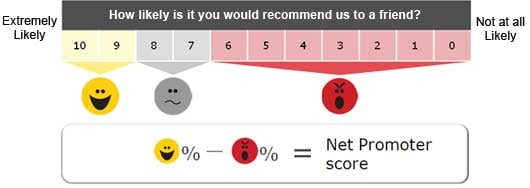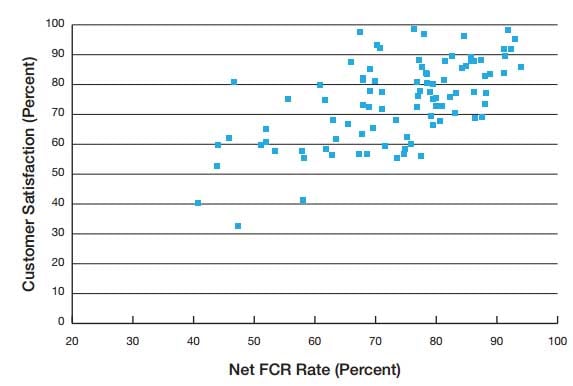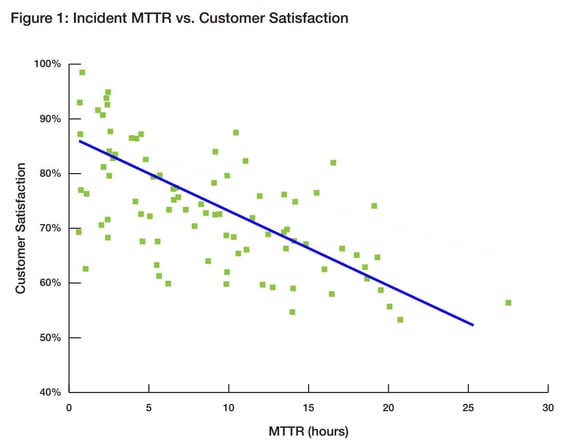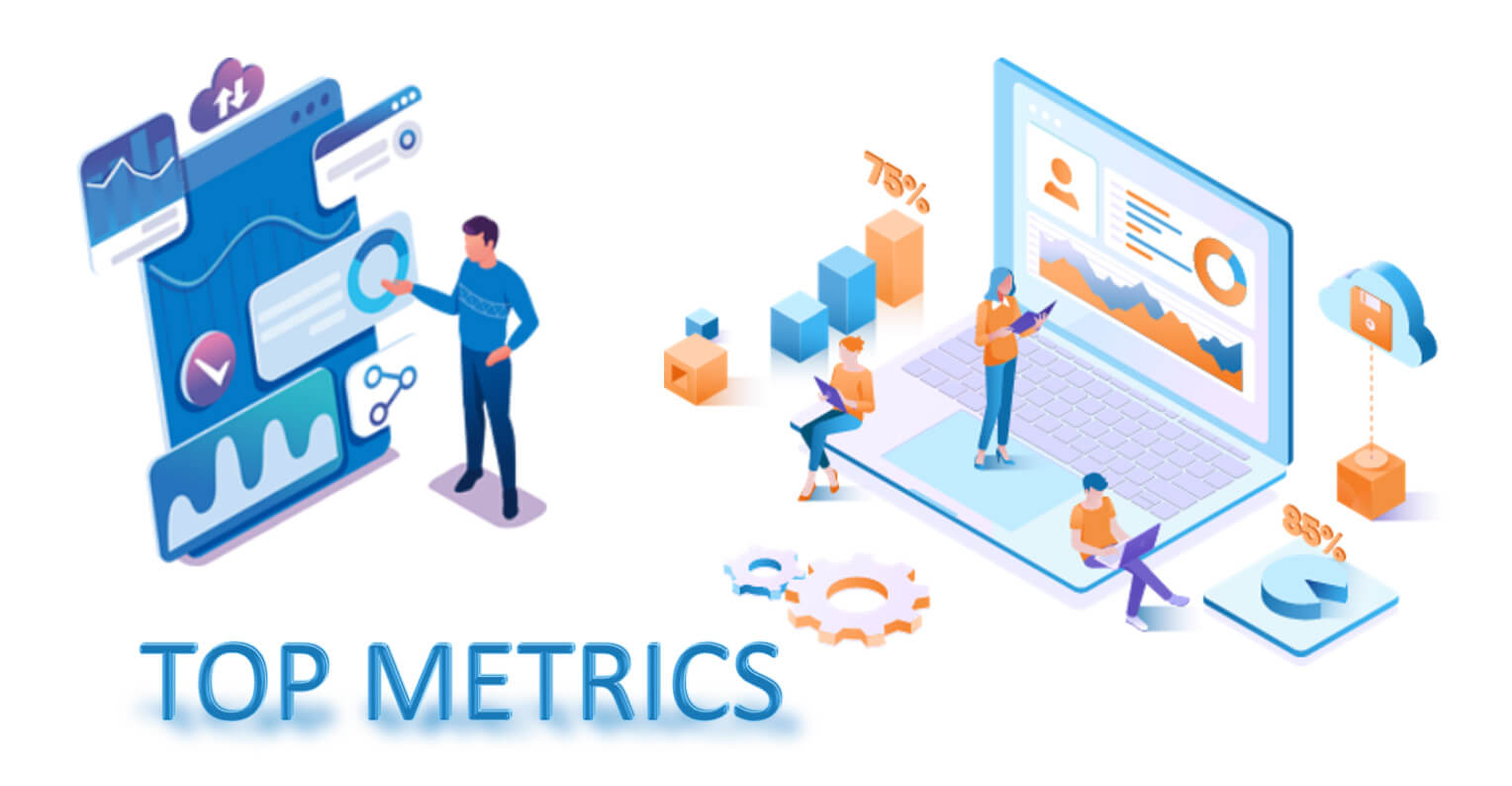Patient experience is an important leading indicator of growth and profitability. Those who focus on it grow faster than those who don’t. But in order to improve, you have to measure. As the healthcare industry is becoming more like the retail world, creating scorecards for your patient experience has proven a useful method for optimizing the patient experience.
Scorecards and Metrics
You can measure how much your service is contributing to your growth by developing a patient experience scorecard. No matter the size of your organization, here are the most important metrics to measure.
Overall Satisfaction
Patient experience is an important early indicator of future growth. You need some overall measurements for a sense of how much your patient experience contributes to the bottom line. Generally, overall satisfaction is measured by the results of patient surveys. You can easily gather this information by linking to a web-based survey or using an immediate survey option at the close of each encounter. It is imperative that the questions asked actually fit with the information you are looking to evaluate. Collecting data directly from patients will allow for you to track trends in service from wait times to staff interactions.
Net Promoter – Grow 2x faster than competition
People talk. New patients are often referred by satisfied, existing patients who have spread the word. This metric will help you determine if your existing client base is likely to refer others your way. Compare your information against others and watch for trends in the data to alert you to potential issues or shortcomings.
What is it?
A single question that has been linked to 2x higher yearly growth.
The power of this shortened satisfaction survey was highlighted in the Harvard Business Review’s The One Number You Need to Grow (2003). A simple solution to identifying performance, this metric is centered around customer responses on their encounter with your company.
What do I ask?
It is as easy as asking “how likely are you to recommend [this practice] to a friend?” Request answers on a scale of 1 – 10. The process is simple and fast, making it more likely that customers will take a moment to answer.
“What is the most important reason for this score?”

How do I interpret the results?
Add up the number of Promoters, those willing to refer others to your business. Add up the Detractors, those unwilling to refer others. Then subtract the detractors from the promoters.
The follow-up question provides you actionable insights. It’s not always clear from the first question what you need to change, and the second question fixes that.
Make it happen:
- No tech available? Try offering a brief exit survey with just 2 questions:
- How likely are you to recommend [this practice] to a friend?
- What is the most important reason for this score?
- Low tech options include website-based survey link, or a Constant Contact email survey.
- Call center solutions involve immediate options via phone or an automated email after each call
Overall call service – get in depth insights
How is your service measuring up to you’re the level of service you want to provide? Seek out specific information to measure against your ideal. Use your data to discover opportunities for staff training and potential areas of improvement in your operations.
What question should you ask?
This is a relatively simple, easy survey-based metric that can bring valuable insight by asking patients “How did our service compare to your ‘ideal’ service?” Patients tend to have their ideal customer service experience fixed in their head and it’s generally based on a past encounter or combination of past encounters. Ask the question then comb through your results to find commonalities.
Why is it important?
Giving patients an opportunity to answer this type of question can lead to greater insight on potential areas of improvement as well as things you are already doing well. Adding another dimension with one question makes this a highly efficient method of measuring patient satisfaction.
Make it happen:
- No tech available? Try random follow-ups for a sampling of your client base.
- Low tech options would involve a website link or an email survey via Constant Contact.
- Call center solutions would again entail phone or email based follow-up after each resolution or interaction.
Revenue
Though it takes the longest to acquire the data for this metric, the bottom line is obviously the most important of all. Compare trends with your patient experience responses above. Reviewing the numbers as they come available and analyzing patterns will help you determine where the process, or your staff, need some additional help.
Most important leading metrics
Overall satisfaction metrics are forward indicators of growth. But when it comes to providing a good experience to patients, they are like looking in a rear view mirror. They are measured after patients were already served – either satisfactorily or unsatisfactorily. They allow you to look back and make changes going forward, however, you may have already lost those dissatisfied patients. Practices need forward-looking metrics as well. Most practices we work with have been measuring service level and time to answer, because that is what they’re phone system reports to them. Unfortunately, the relationship between service levels and satisfaction is not very clear. To make a significant impact on patient experience, put the following metrics on your scorecard.
First call resolution
Thinking back to your best customer service experiences, how many people did you talk to before your situation was resolved? How many times did you have to explain your story, or at the very least, clarify for a new representative? Generally, people don’t mind waiting if their issue is handled by the first person they speak with instead of having to deal with more than one representative. Use the information obtained to guide training for your frontline staff so they can handle more of those first interactions and improve call times.

Metric of the Month: First Contact Resolution (MetricNet)
Why is it important?
How many times do you want to call in to have an issue handled? Your patients likely feel the same so it’s no surprise that First Call Resolution is highly correlated to customer satisfaction. Are your patients finding resolution before they hang up the phone? If they aren’t, this is a good way of identifying problem areas and potential training opportunities.
Make it happen:
- No tech available? Simply grab a pen and paper and make tick marks every time you handle a patient’s issue on the first call/interaction.
- Call center solutions involve call tracking software like Care desk. Reports automate this measurement for you.
Time to resolve
Speed of resolution is one of the most important measures of success. As society has evolved, patience is no longer a virtue. Waiting for an issue to be resolved only increases the patient’s level of frustration and decreases the likelihood of him or her leaving that call feeling satisfied.

Metric of the Month: Mean Time to Resolve (MetricNet)
Why is it important?
Society as a whole is impatient but when it comes to waiting on a call to resolve an issue, people have very little tolerance. Resolution time is strongly linked to customer satisfaction and correlated to First Call Resolution, working on these two metrics simultaneously is a two-for-one opportunity for you.
Make it happen:
- No tech available? No problem, whip out your trusty paper and pen to track times. You will need paper forms for your staff to record start time and resolution time.
- Low tech options are cumbersome but doable. They include staff coordinating over HIPAA compliant cloud storage. The simplest is probably keeping an Excel sheet of calls in a spreadsheet online. Staff who take each call record the patient name and encounter start time. The staff who resolve each call open the spreadsheet to record the resolution time.
- Call center solutions can provide automated reports for this metric. Look for call tracking software like Care desk.
Number of calls
Watching these numbers for trends to ensure appropriate staffing to handle the volume. Monitoring the number of calls handled is also an important gauge of employee productivity.
Make it happen:
- No tech? You’ve still got that notepad and pen, right? Tick marks are your friend.
- A low tech option is using your phone system reports.
- The call center solution would be a phone system number per employee per hour.
Call quality
Part of efficiency entails collecting and providing the appropriate information to your patients. Do your agents know where to find the information they need in a timely manner? Are they provided with all of the tools necessary to serve the patients? This metric may be trickier to decode but vital to the bottom line
Make it happen:
- No tech? Sit with your agents and observe the calls. These results can be skewed by anxiety at having somebody over their shoulder.
- Low tech options would involve listening to recorded calls and then scoring the call via an evaluation.
- A Call center solution would entail live call monitoring software.
Addressing Dissatisfaction
 |
Amazing as it sounds, your most loyal customers are not the ones who’ve always received great service. Your most loyal customer base is most likely comprised of patients who have had a problem with your service at some point in time. Research shows that the most loyal customers are those who were reasonably angered by an encounter only to have it corrected in an exceptional manner by an agent. It helps to predict when these opportunities could arise. The following metrics give you the opportunity to nip things in the bud and improve your operations to preempt the dissatisfaction. |
Number of active issues
The total number here will give you an idea of the unresolved volume. Look for trends in active issues.
Make it happen:
- Low tech would involve monitoring the number of calls waiting at various points throughout the day to watch for trends.
- Call center solutions would involve software that provides more in-depth reports.
Number of complaints
Tracking your complaints allows for better, more efficient training. Complaints aren’t always bad if you use them to improve your customer service and overall operations. In some ways, complaints give you another opportunity to satisfy a customer. A TARP study found that customers whose complaints were satisfactorily resolved were 30% more loyal than those who never complained and 50% more loyal than those whose complaints were unsatisfactorily handled. The complaint handling can be as important as the initial interaction!
Make it happen:
- No tech? Tick marks on paper remain a rudimentary method of tracking complaints.
- Low tech options would involve monitoring your social media for complaints.
- Call center solutions include giving patients an opportunity to reach you via email on the website and/or utilization of Care desk.
Number of escalated complaints
The type of active issues you’re dealing with can change with so many variables affecting the queue. Call volume, unexpected delays, and more can lead to more calls being escalated. Find out the reasons for the call and ways to answer more timely if possible.
Make it happen:
- No tech? Track your escalated calls using pen and paper with a tick mark to represent every time a call has been transferred up the chain.
- Low tech solutions would entail monitoring the number of calls transferred to secondary and tertiary agents.
- Call center solutions involve software to provide reporting on the number of escalated calls per agent and to what level they were advanced.
Best of the rest
Obviously, with so many number-crunching options, there are hundreds of metrics available to monitor just about any aspect of your process. Not all of them are useful to everybody but there’s something for everybody. The metrics discussed above have very definitive uses but that doesn’t mean there aren’t more opportunities to analyze your efficiency. The following measurements may not be as important but should not be overlooked as they all contribute to the big picture.
- Call abandonment
Patients lose their patience and drop the call. It happens, but is it happening too often? Track the level of call abandonment to make sure you are truly serving your patients.
- Agent schedule
How effective is an employee of he or she is not actively handling calls during a shift? Tracking employee schedules and time available on the phones is crucial to productivity and effectiveness of your team.
- Average handle time
For a long time, this was the measure for most call centers, but it only gauges efficiency and not how the call was resolved. How happy is a customer if they were handled quickly but their issue was unresolved versus a call that took little longer but resolved the issue?
- Active and waiting calls
Watching your number of callers being served versus those waiting to be connected is a real-time metric that alerts you to call volume and when it may be necessary to pick up the pace of calls – but not at the expense of call quality!
Final Thoughts
As the healthcare industry evolves, companies are being forced to adapt in order to retain their patients and increase revenue. Using these metrics to analyze the efficiency of existing processes and determine opportunities for improvement can mean the difference between losing patients and growing your client base. Happy patients tell 3 friends. Unhappy patients tell Google!









